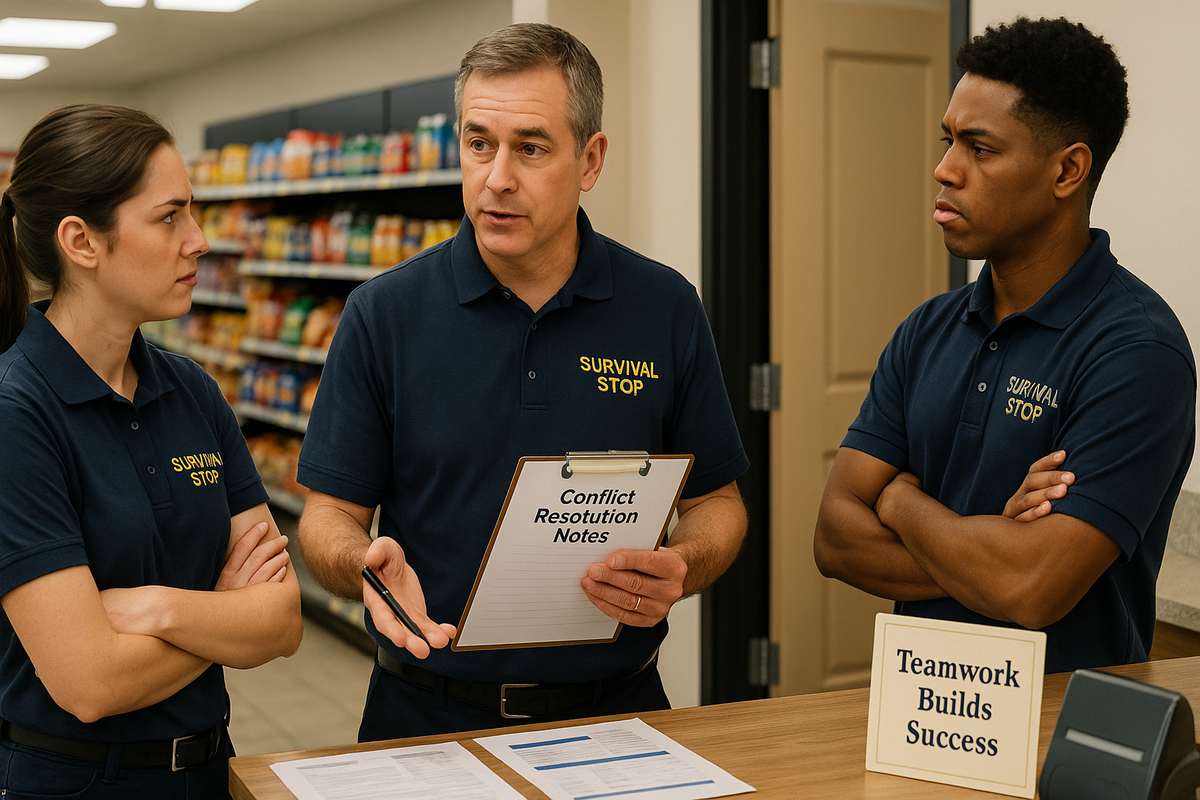How to Handle Employee Conflicts in a Convenience Store
Assistant managers need professional conflict management skills to keep convenience store teams productive and cooperative. This comprehensive guide covers practical steps for addressing disputes, preventing future conflicts, and turning tense situations into opportunities for stronger teamwork.

If you’ve ever worked in a convenience store, you know the space isn’t big enough to hide tension. A disagreement over shift coverage, a grudge about cleaning duties, or even the infamous “who’s supposed to stock the cooler” debate can quickly affect morale, productivity, and customer service.
As an assistant manager, your role isn’t just to keep the store running. It’s to keep the team working together. That means knowing how to address conflict professionally, quickly, and fairly.
Why You Can’t Ignore Employee Conflict
In a small retail environment, unresolved conflict:
- Creates a toxic atmosphere customers can sense
- Distracts employees from their tasks
- Divides your team into “sides”
- Increases turnover (and your training workload)
- Damages your credibility as a leader
Handled well, conflict can actually lead to stronger communication, better processes, and a tighter team.
5-Step Framework for Handling Employee Conflict
1. Address It Quickly
Don’t hope it will go away. In a convenience store, problems usually get worse if ignored. As soon as you notice tension or hear about an issue, schedule a time to talk.
Example: “I noticed there’s been some tension between you and Sam this week. Let’s talk after the shift today.”
2. Listen to Each Side Separately
Give each employee space to share their version of events without interruption. Take notes, clarify details, and look for:
- Specific incidents
- Repeated patterns
- Misunderstandings
- Emotional triggers
3. Bring Them Together (if appropriate)
If the situation allows, mediate a short meeting with both employees.
- Set ground rules like “one speaks at a time”
- Identify the root cause
- Guide them toward shared goals
Keep it professional and don’t let the conversation turn into personal attacks.
4. Focus on Solutions, Not Blame
Shift the discussion toward “what needs to change” instead of “who was wrong.”
- Adjust procedures if needed, such as a cleaning rotation chart
- Clarify expectations
- Agree on next steps and confirm understanding
5. Follow Up
Check in a few days later to see if the tension has eased. Praise progress and address any lingering issues.
Common Mistakes to Avoid
|
Mistake |
Why It Backfires |
|
Ignoring small
problems |
They almost always
grow bigger |
|
Taking sides too soon |
You’ll lose
trust from the other employee |
|
Discussing conflict
in front of customers |
Damages your
professional image |
|
Letting emotions lead |
If you lose
composure, they will too |
Quick Reference: Conflict Response Checklist
✅ Notice the problem early
✅ Speak privately with each person
✅ Mediate if possible
✅ Keep discussion about solutions
✅ Follow up after resolution
Takeaway
Conflict in a convenience store is inevitable, but how you handle it defines your leadership. Step in quickly, listen objectively, and guide the team toward solutions to build trust and maintain a respectful, cooperative work environment.





